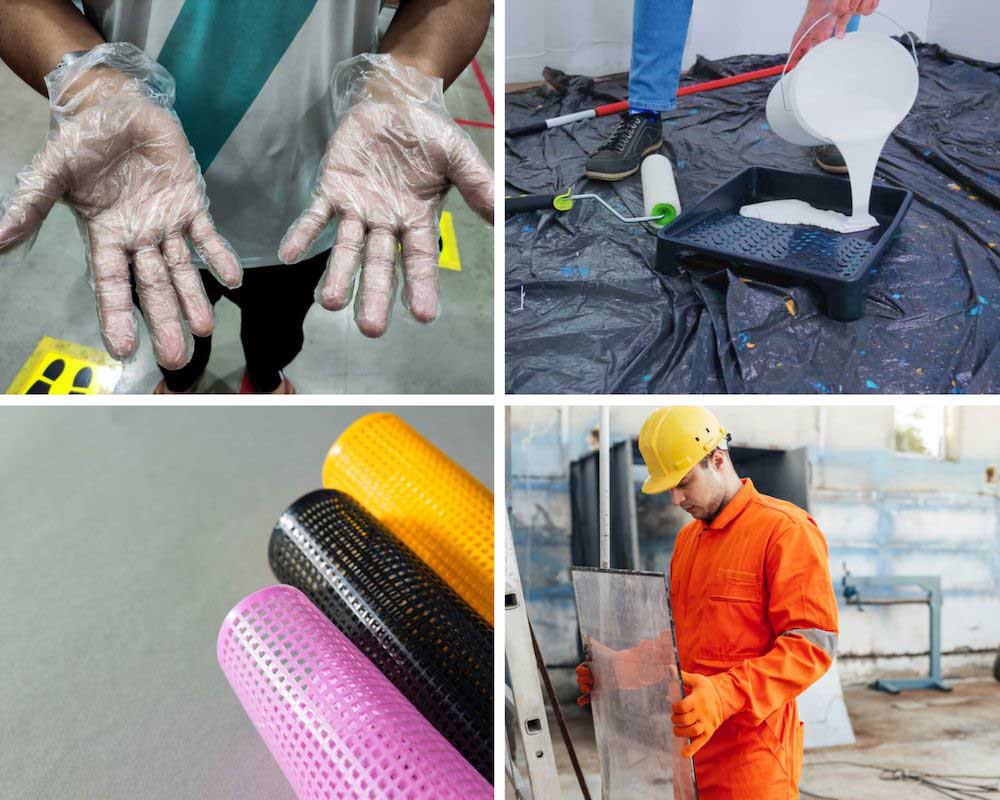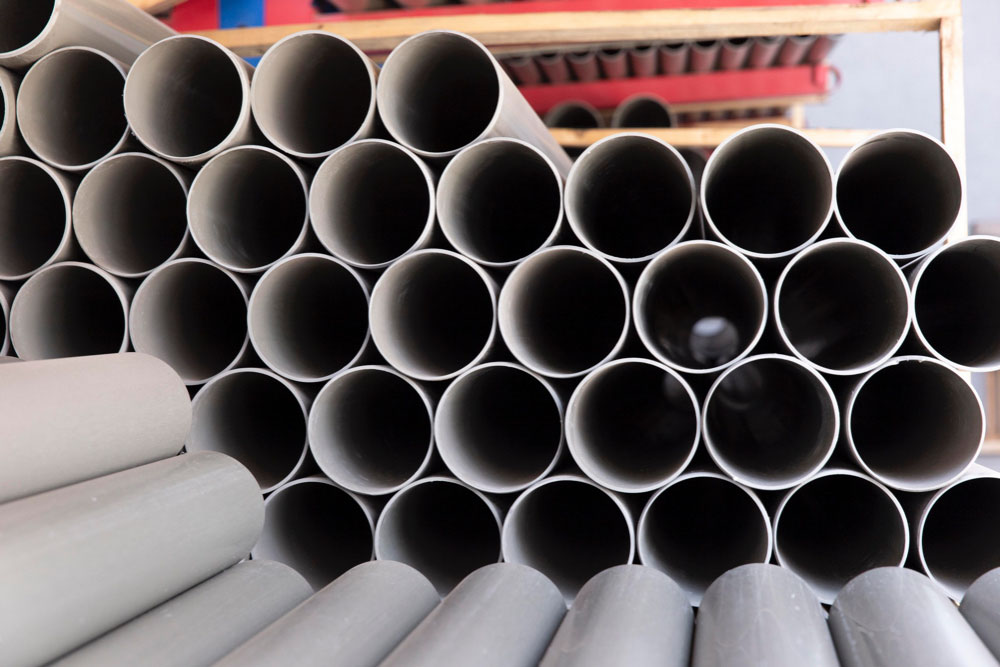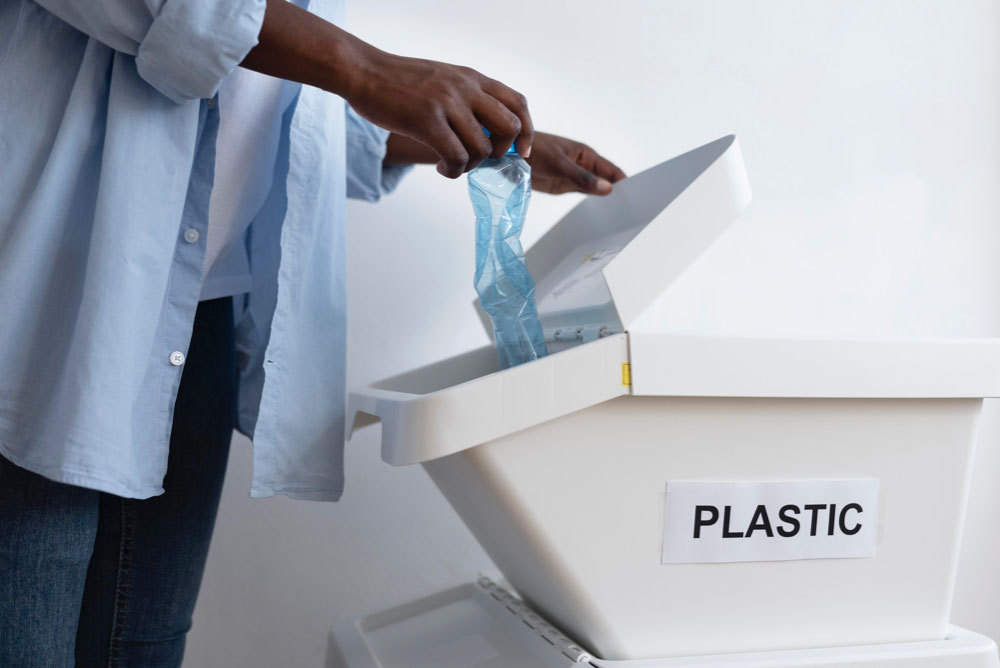
Table of Contents
Quick Summary
- Plastic is widely used in construction for its strength, durability, and low cost.
- The term “plastic” is originated from the Greek plastikos, meaning mouldable.
- Natural materials like horns and rubber are evolved into synthetic plastics.
- Typical uses of plastic for construction include pipes, roofing, flooring, tanks, and furniture.
- It is lightweight, durable, corrosion-resistant, and long-lasting.
- Disadvantages of plastic for construction include pollution, brittleness, and recycling issues.
- Key traits of plastic use in construction are water resistance, fire safety, and thermal insulation.
- Recycled plastic bricks and modular housing show future potential.
Plastic as a building material is a common choice. In fact, plastic has become an integral part of our daily life. Every year the consumption of plastic is gradually increasing. Here we will be discussing about new facts and potential of plastic. The topic range includes suitability of plastic as a building material, use of different types of plastic in construction work and an assessment if plastic can change the way we look at its use in construction.
The Origin
The word Plastic is taken from the Greek word ‘plastikos’, which means ‘capable of being moulded’. It is made up of either semi-synthetic compounds or fully-synthetic compounds that are malleable, durable and not very costly.
In the Middle Ages, cattle horns were used as windows for lanterns while expanded polystyrene was used for buildings isolation, which was invented by Dow Chemical in 1954. As times are changing, uses of plastics are being modified keeping in mind the properties, advantages, disadvantages and uses.

In the case of developed economies, one-third of plastic is used in packaging and also in buildings in the form of components such as plumbing or vinyl siding. Plastics have evolved from the use of natural plastic materials such as chewing gum to the use of chemically modified, natural materials such as natural rubber, collagen, galalite, nitrocellulose and finally to fully synthetic molecules such as Bakelite, epoxy, polyvinyl chloride, LDPE, HDPE etc.
With many advantages, plastic has become a part of our daily lives. It is also one of the most widely used construction materials too. Here, we will understand the various properties of plastic, its uses, advantages and disadvantages, in general as well as with specific reference to construction sector as the use of plastic construction materials is increasing almost each day.
Popular Uses of Plastic in Building Construction
- Plumbing Pipes, Fixtures, Manhole Covers, Manholes
- Roofing
- Wall Panels for Wall Partitions or for Dry Wall
- Electrical Fixtures
- Furniture like Chairs, Table, etc.
- Shutters
- Flooring
- Waterproofing Membranes
- False Ceiling Panels
- Sealants
- Water Tanks

Although plastics harm the environment, they are making their way into construction. Let’s look closely at the pros and cons of plastic.
Advantages of Plastic Used in Construction

Advantages of using plastic in construction are:
- Plastics are durable as they are not biodegradable and so can last for a long period of time.
- Plastics possess very good strength and toughness, which does not let them deform their shape.
- Plastics are cheap to produce and can be very easily found in the market by the buyer for building a home.
- They can be reused if dismantled and can be easily joined with other plastics, particularly in the case of plumbing works.
- Plastics occupy a small space in the case of landfills. Although the time taken by plastic materials to decompose in a landfill is more, the amount of space taken up by it in these areas is less when compared to other items. Volume taken by paper products is seven times more than plastic.
- Methane is not exposed to air when plastics are dumped in landfills. In the case of plastics, they don’t emit methane gas when it starts getting broken down, which implies that it is easier to accurately analyse the total life span of the plastic product. It is useful for demolition purposes.
- Plastics contain a high energy density, and so incinerating plastics can be quite useful in some situations because of their high energy density rating.
- In place of traditional products for cladding panels, soft boards, fascia, etc. UPVC (Unplasticized Polyvinyl Chloride) products are used because of their advantage like lack of wrap, resistance to rot and lightweight.
- Plastic decorative laminates are well known for panelling or furniture purposes, as they are not attacked by termites as in the case of wood.
- It reduces dead loads in buildings, and thus buildings do not become heavy with traditional materials.
Disadvantages of Plastic in Construction

Some of the disadvantages of plastic in construction are as follows –
- Majority of the world’s pollution found in the oceans are mainly due to plastic, which is killing animals of all kind since they are consuming plastic.
- Although plastics are cheaper, it impacts lives of people, which in turn are costlier.
- Plastics have a tendency to soften at elevated temperatures. This restricts its use in main structural elements and also for hot water systems.
- Cold climates can cause the plastic to become brittle and fracture under pressure. So, it is advisable not to be use it in cold climatic conditions.
- Many plastics are difficult to recycle and hence there rises concern over their decomposing as many plastics take millions of years to decompose.
- Plastics have a low modulus of elasticity, which makes it unsuitable for load-bearing applications as in the case of beams and columns.
- Although fireproof property is existent in plastic, many varieties of plastics have high thermal expansion rate, which requires more detailing in design to allow adequate thermal movement. It is a premium disadvantage of plastic in construction works.
Properties of Plastic That Enhance its Suitability

The varieties of plastics’ availability, and increased uses of plastic in construction is a result of its advantageous qualities, which include,
- The main property that makes plastic suitable to be used in construction is its lightweight and yet strong, which makes it easier for transportation, loading-unloading, and installation etc.
- It is also corrosion resistant as it has strong weather fighting ability which leads to less maintenance, a very important aspect for buildings. For this, PPS (Polyphenylene Sulphide) is a chemical that is used in plastic. It is mostly used in applications which are exposed to chemicals that are highly corrosive at high temperatures.
- It has the capability of achieving tight seals which otherwise obstruct the flow of any liquid substance to other material through it. In simple words, it is impermeable because of its structure. They are made by the formation of polymeric chains. Such a structure provides the quality of water repellence, which helps make the building leakproof.
- It is resistant to fire. For this during processing, antimony trioxide is mixed with a brominated compound to make polyethylene. Antimony trioxide acts harmoniously with brominated compounds to intensify fire-retardant properties. This is done by slowing down the combustion process.
- Plastic is flexible as it has anti-vibration properties which make it suitable to undergo large deflections as in case of earthquakes without causing deformation. The seismic performance of the building is improved due to this.
- Plastic has anti-vibration properties. Airborne noises can be dealt with it because of this property.
- For thermal insulation, plastic acts as an excellent product. By incorporating foamed plastic sheeting within the structure, this can be achieved.
You now have a thorough understanding of plastic as a building material. However, one question arises in everyone’s mind: what is the future of plastic? So, let’s see.
Future Scope of Using Plastic in Construction

Constructing homes using plastic is nowadays becoming an increasing trend. For this, different admixtures are used, which in turn increase strength. Recycled plastic bricks are coming into use, which have many advantages like –
- Low environmental impact.
- Reduced energy consumption.
- Thinner and lighter than conventional bricks.
- Low-cost modular housing.
- Building structurally sound infrastructure to withstand an earthquake.
- Excellent insulation properties (about 5 times more than conventional bricks).
- Better noise insulation.
Miniwiz Sustainable Energy Development Co. Ltd. is a well-known company building several structures. They make factories, entertainment facility, theatres, and exhibition areas in countries like Taiwan, Malaysia, and China. One of their recent additions is the EcoARK Pavilion in Taipei. Plastic bottles called Polli-bricks are used to make the walls of this building that fit together perfectly, resembling pieces of play house. Their raw materials mainly include recycled plastic water bottles. Similarly, there are other companies like Byfusion, Conceptos Plasticos that are using plastic using innovative ways. Many more companies have mushroomed, who are working on the same domain for reusing plastics for constructional work.
Conclusion
Plastic is undoubtedly the most revolutionary product in recent history. Its uses in a building are evolving with changing times, and in future, some unexpected uses in buildings can happen like its use as load-bearing members or uses in varying climatic conditions, etc. China produces the largest quantity of plastic, at nearly 60 million tonnes. This was followed by the United States at 38 million, Germany at 14.5 million and Brazil at 12 million tonnes. These developed countries are taking plastic usage to the next level. Hence, in the future, plastics are going to be the material for home construction.
Hopefully, we have provided sufficient information about how plastic is a potential building material. Before you go, here is the next in the building materials series that you should be aware of.
Also Read:
Fire-Resistant Building Materials, Green Building Materials & Eco-Friendly Building Materials –
10+ Fire-Resistant Building Materials to Use during Construction of your Home!
12 Green Building Materials That Are Alternatives To Traditional Concrete
8 Eco Friendly Building Materials Utilised in Green/Sustainable Buildings!
FAQs on Plastic as a Building Material
1. Why Is Plastic Used as A Building Material?
Plastic is durable, lightweight, corrosion-resistant, and affordable. Its flexibility and strength make it worthwhile for pipes, panels, flooring, and waterproofing in modern construction.
2. What Are the Main Advantages of Plastic in Construction?
Plastic offers durability, weather resistance, easy installation, termite protection, and low maintenance. It also reduces dead load and can be recycled or reused in many applications.
3. What Are the Disadvantages of Using Plastic in Buildings?
Plastics cause pollution, are hard to recycle, soften in heat, and become brittle in cold climates, limiting their use in main structural or extreme weather applications.
4. How Is Recycled Plastic Used in Modern Construction?
Recycled plastic is used for bricks, panels, and modular houses. These materials are strong, lightweight, cost-effective, and energy-efficient, with excellent insulation and earthquake resistance.
5. What Is the Future of Plastic as A Building Material?
The future looks promising with innovations like plastic bricks, UPVC panels, and sustainable construction techniques that reduce energy use and environmental impact.
Author Bio
Nafisa Nazneen Choudhury – Nafisa Nazneen Choudhury is a Civil Engineer (completed B.E. from Assam Engineering College) and is currently pursuing M.Tech in Structural Engineering at National Institute of Technology, Silchar. She is a Technical Content Writer, having over 3 years of experience and has wrote many articles related to Civil Engineering. She is also a Book Author (Authored – “Dream Tales of NNC: Revenge By Murder”) and her book can be found on Amazon. She is also a Guest Author at Gharpedia. Moreover, she is a certified member at Institution of Civil Engineers (ICE) and National Society of Professional Engineers (NSPE). She writes her blogs at her website – nnc2017.wordpress.com. She can be reached on LinkedIn.






























